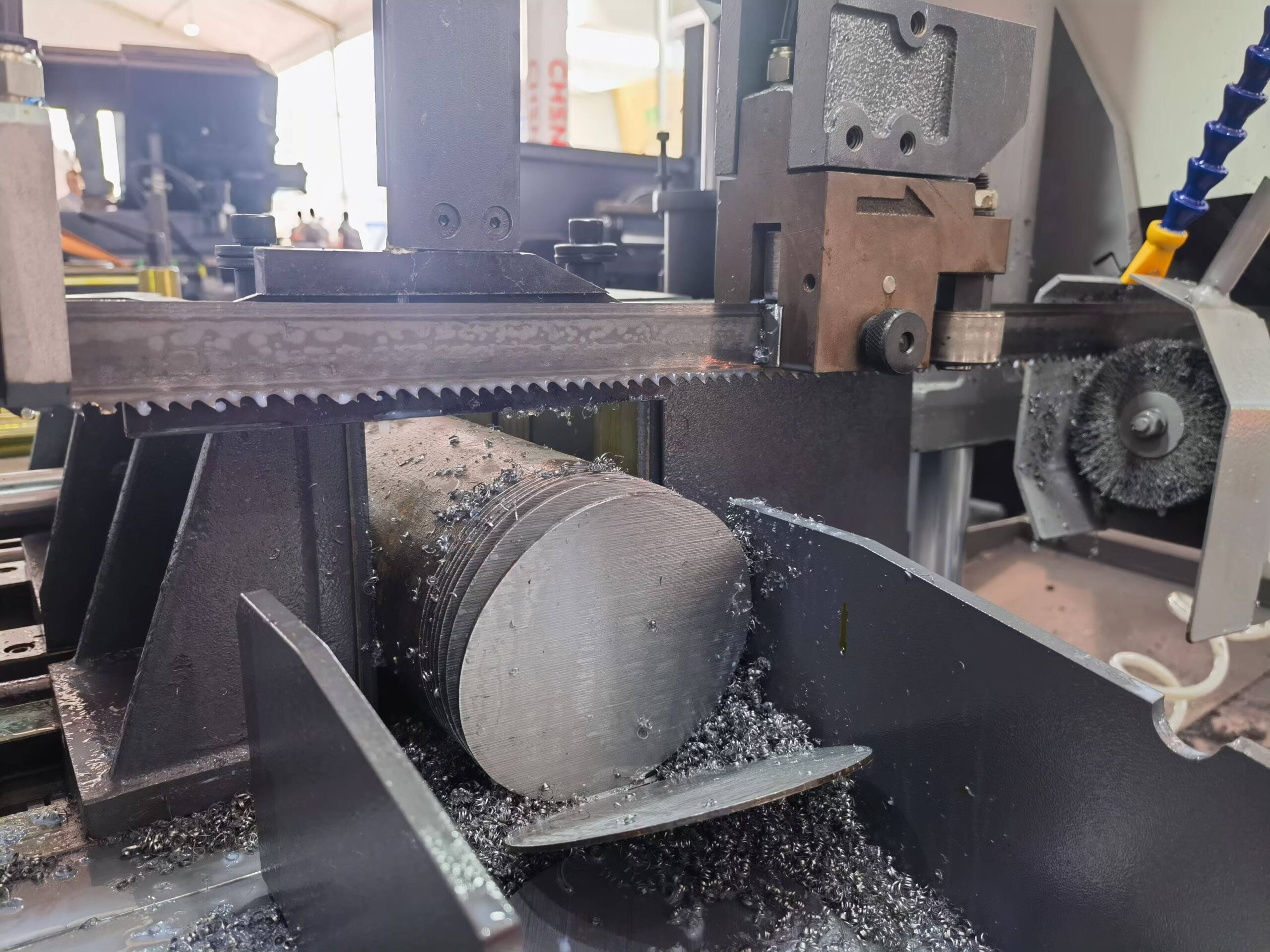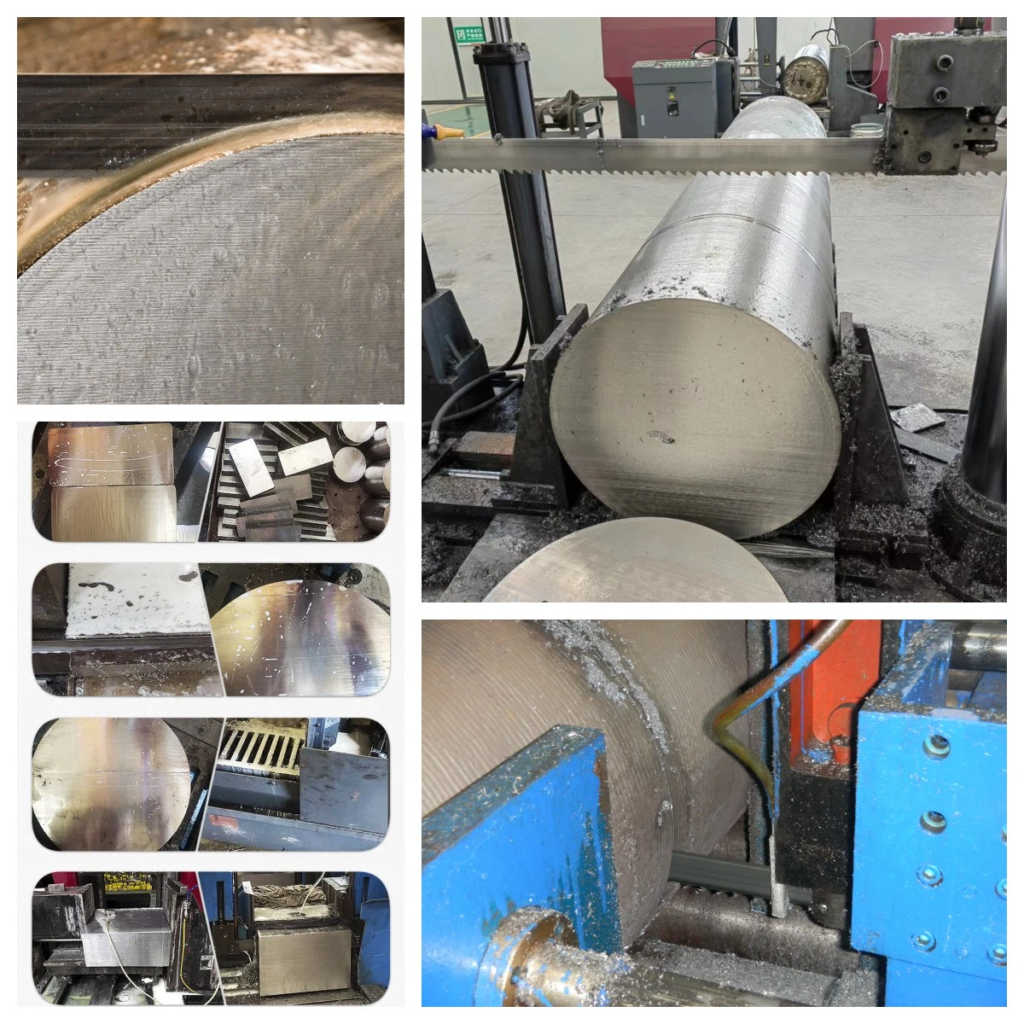In the metal processing industry, the efficiency and quality of your cuts rely heavily on the strength and proper tensioning of the band saw blade. But what does "strength" mean in the context of band saw blades, and why is tension vital for performance? Understanding these concepts is crucial for anyone using bandsaws in demanding applications.
The strength of a band saw blade is defined by its ability to endure tension and resist wear during cutting operations, typically measured in PSI (pounds per square inch). For most blades, tension ranges from 15,000 to 35,000 PSI, depending on the material and design. Proper tensioning ensures the blade cuts efficiently without deflection or breakage.
The band saw blade strength is determined by factors such as:
- Material composition: Carbon steel, bimetal, or carbide-tipped.
- Blade tension: The applied force that keeps the blade taut during cutting.
- Beam strength: The blade’s resistance to deflection under load.
These factors influence cutting precision, blade longevity, and overall productivity.
Why is Band Saw Blade Tension Critical?
Proper tension is the backbone of effective cutting in metal processing. When a blade is tensioned correctly:
- Straight, Accurate Cuts: Adequate tension prevents the blade from wandering or deflecting, ensuring precise cuts.
- Extended Blade Life: Improper tension can cause unnecessary wear or even blade breakage, reducing the blade’s lifespan.
- Enhanced Machine Performance: A well-tensioned blade reduces strain on the saw’s motor and components, ensuring smoother operations.
On the other hand, incorrect tension can lead to:
- Blade Deflection: Causes inaccurate cuts and poor surface finishes.
- Fatigue Cracks: Premature failure from excessive stress.
- Inconsistent Results: Uneven pressure leads to poor cutting performance.
How to Set the Right Tension for a Band Saw Blade
Achieving the correct blade tension requires understanding your blade’s material and application. Most bandsaw manufacturers provide tension specifications for their blades, which are measured in PSI. Here’s a general guide:
- Carbon Steel Blades: 15,000 to 25,000 PSI.
- Bimetal Blades: 20,000 to 30,000 PSI.
- Carbide-Tipped Blades: Up to 35,000 PSI for high-performance cutting.
Steps to Adjust Blade Tension
- Use a Tension Gauge: This tool helps ensure accurate readings.
- Consult Manufacturer Guidelines: Refer to your blade’s tension requirements.
- Test for Deflection: Apply moderate force to the side of the blade; it should flex no more than 1/4 inch over a 6-inch span.
Regularly checking and maintaining blade tension is a best practice that minimizes downtime and optimizes cutting efficiency.
How Does Tension Affect Cutting in Metal Processing?
Tension is especially critical in metal processing due to metals' dense and often abrasive nature. High-tension blades are essential for the following:
- Cutting Hard Metals: Hardened steel, titanium, and alloys require precise tension to handle their toughness.
- Minimizing Heat Build-Up: Proper tension allows smoother cutting, reducing friction and overheating.
- Maintaining Tooth Integrity: Prevents tooth stripping or excessive wear during prolonged use.
In contrast, low or uneven tension results in:
- Ragged edges and poor finish.
- Blade wobbling and instability.
- Frequent blade replacements increase costs.
Practical Tips for Maintaining Band Saw Blade Tension
- Monitor Blade Tension Regularly: Invest in a tension gauge to measure PSI during setup and after extended use.
- Ensure Proper Machine Setup: Align guides, rollers, and blade tracking to prevent uneven stress.
- Choose the Right Blade for the Job: Matching the blade’s material and TPI to the task ensures tension requirements are met without overloading the blade.
Common Tensioning Mistakes
- Over-Tensioning: Leads to blade fatigue and cracking.
- Under-tensioning: Causes deflection and uneven cuts.
- Ignoring Blade Specifications: Every blade has unique tensioning needs based on its material and design.
Key Advantages of Proper Tensioning in Metal Processing
By maintaining optimal blade tension, businesses can achieve:
- Superior Cut Quality: Straight, smooth cuts with minimal burring.
- Increased Productivity: Faster cutting speeds without compromising precision.
- Lower Operational Costs: Longer blade life reduces replacement frequency and downtime.
- Safer Operations: Properly tensioned blades are less likely to snap or fail, enhancing workplace safety.
For industries handling high-volume or specialized metal cutting, the importance of blade tension cannot be overstated.
Blade Tension Tools and Techniques
Modern tools make tensioning easier and more accurate. Popular options include:
- Dial Tension Gauges: Measure PSI directly and are suitable for all blade types.
- Integrated Tension Meters: These are found on advanced bandsaw machines for real-time adjustments.
- Manual Tensioning: Though less precise, manual adjustments can work with practice and experience.
Conclusion
The strength of a bandsaw blade is directly tied to its tensioning, a critical factor in achieving efficient and accurate metal processing. By understanding the principles of blade tension and implementing best practices, businesses can maximize performance, reduce costs, and ensure safety in their operations. Trust our expertise to guide you in selecting and maintaining high-quality bandsaw blades that deliver unmatched results.





